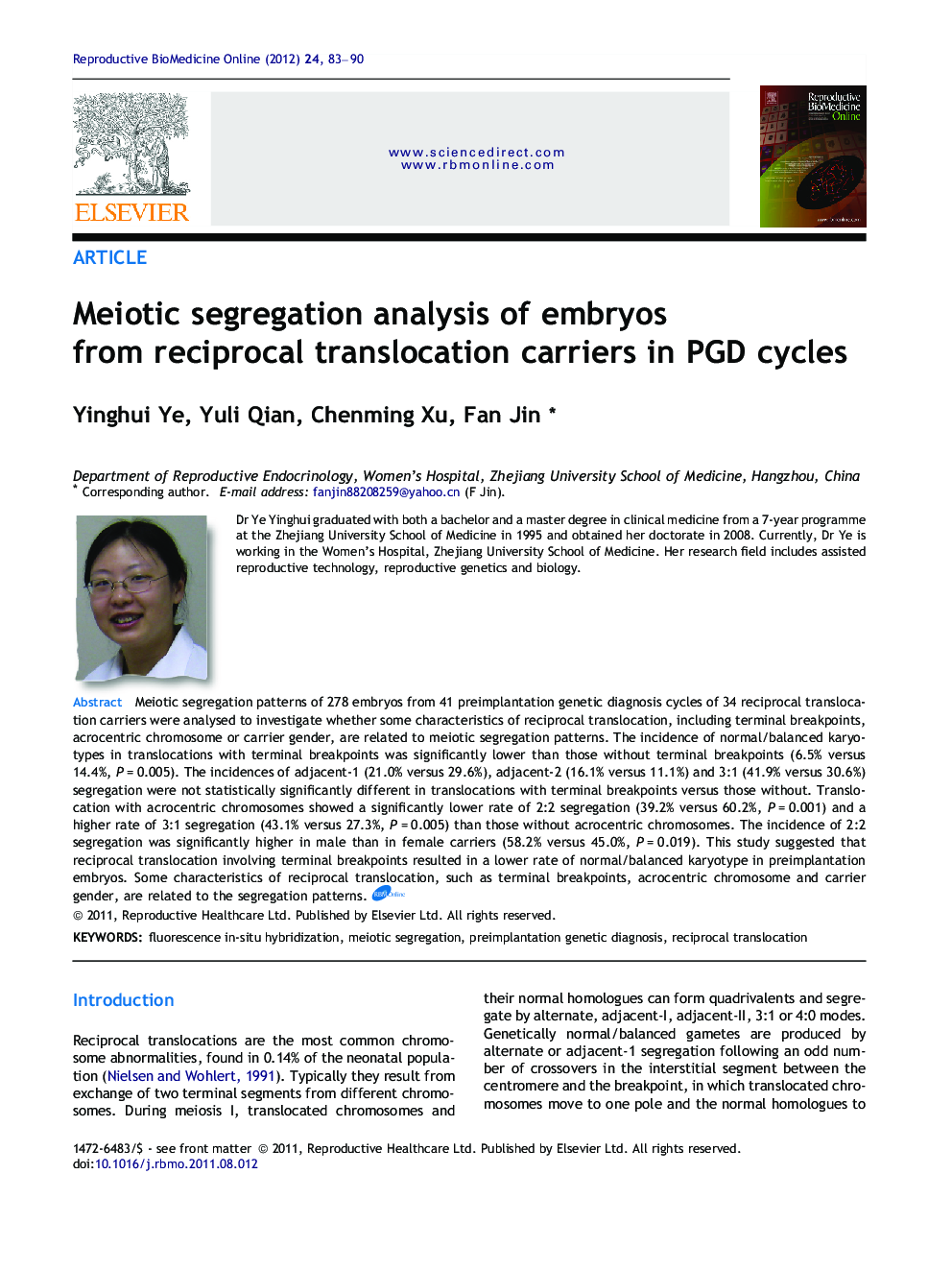| Article ID | Journal | Published Year | Pages | File Type |
|---|---|---|---|---|
| 3970626 | Reproductive BioMedicine Online | 2012 | 8 Pages |
Meiotic segregation patterns of 278 embryos from 41 preimplantation genetic diagnosis cycles of 34 reciprocal translocation carriers were analysed to investigate whether some characteristics of reciprocal translocation, including terminal breakpoints, acrocentric chromosome or carrier gender, are related to meiotic segregation patterns. The incidence of normal/balanced karyotypes in translocations with terminal breakpoints was significantly lower than those without terminal breakpoints (6.5% versus 14.4%, P = 0.005). The incidences of adjacent-1 (21.0% versus 29.6%), adjacent-2 (16.1% versus 11.1%) and 3:1 (41.9% versus 30.6%) segregation were not statistically significantly different in translocations with terminal breakpoints versus those without. Translocation with acrocentric chromosomes showed a significantly lower rate of 2:2 segregation (39.2% versus 60.2%, P = 0.001) and a higher rate of 3:1 segregation (43.1% versus 27.3%, P = 0.005) than those without acrocentric chromosomes. The incidence of 2:2 segregation was significantly higher in male than in female carriers (58.2% versus 45.0%, P = 0.019). This study suggested that reciprocal translocation involving terminal breakpoints resulted in a lower rate of normal/balanced karyotype in preimplantation embryos. Some characteristics of reciprocal translocation, such as terminal breakpoints, acrocentric chromosome and carrier gender, are related to the segregation patterns.Reciprocal translocations result from exchange of two terminal segments from different chromosomes. During meiosis I of reciprocal translocations, translocated chromosomes and their normal homologues segregate by alternate, adjacent-I, adjacent-II, 3:1 or 4:0 modes. Genetically normal/balanced gametes are only produced by alternate segregation while other segregation modes would lead to the production of chromosomally unbalanced gametes. Preimplantation genetic diagnosis (PGD) has been offered to carriers of reciprocal translocations to reduce the frequency of spontaneous abortions and affected newborns by selecting chromosomally normal/balanced embryos. In the present study, meiotic segregation patterns of 278 embryos from 41 PGD cycles of 34 reciprocal translocation carriers were analysed to investigate whether some characteristics of reciprocal translocation, including terminal breakpoints, acrocentric chromosome or carrier gender are related to meiotic segregation patterns. The incidence of normal/balanced karyotypes in translocations with terminal breakpoints was significantly lower than those without terminal breakpoints. The incidence of adjacent-1 segregation was lower and the incidences of adjacent-2 and 3:1 segregation were higher in translocations with terminal breakpoints. Translocation with acrocentric chromosomes showed a significantly lower rate of 2:2 segregation and a higher rate of 3:1 segregation than those without acrocentric chromosomes. The incidence of 2:2 segregation was significantly higher in male than in female carriers. Our study suggests that reciprocal translocations involving terminal breakpoints resulted in a lower rate of normal/balanced karyotype in preimplantation embryos. Some characteristics of reciprocal translocation, such as terminal breakpoints, acrocentric chromosome and carrier gender, are related to the segregation patterns.
